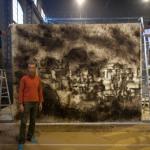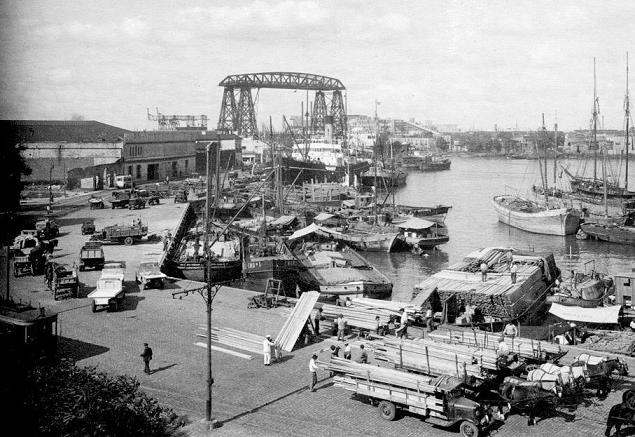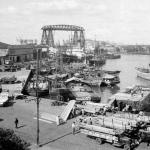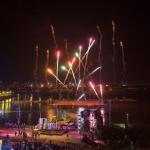This weekend´s firework exhibit by Cai Guo-Quiang in La Boca was a success to say the  least. The streets were packed to the brim with spectators and you were at any given moment shoulder to shoulder with the people on either side of you. The announcer most certainly let the anticipation build as they explained the exhibit and polled the crowd on its tango abilities. Interestingly, the announcer doubled as the tango singer- quite an efficient choice. All in all the show was about a 3 hour experience, not taking into account the complicated task of getting home when what felt like half of the city was attempting to do the same.
least. The streets were packed to the brim with spectators and you were at any given moment shoulder to shoulder with the people on either side of you. The announcer most certainly let the anticipation build as they explained the exhibit and polled the crowd on its tango abilities. Interestingly, the announcer doubled as the tango singer- quite an efficient choice. All in all the show was about a 3 hour experience, not taking into account the complicated task of getting home when what felt like half of the city was attempting to do the same.
The show was broken into halves and then further into segments. Each segment had fireworks that responded to the dancers, then to the music, and then portrayed the artist´s vision of the city thematically. The show differed from Guo-Quiang´s signature colored or black clouds that make their mark in the sky but rather was an explosion of sparkling, fast moving colors that danced across the night sky. We had the pleasure of hearing almost directly (he had a translator) from the artist as he answered questions in front of the crowd. He explained that each style of firework represented a different instrument in the music: the weeping willow like bursts in mid range representing the violins, the linear, vertical streaks at high range representing the piano, etc.
Guo-Quiang made it a point to exaggerate Argentina´s complexity, using the location of La Vuelta Rocha as a symbol for the assorted immigration that occurred here. He explained that the more time that he spends getting to know Argentina, the less he feels that he understands it and yet the more that he loves it. His exhibition at the Fundacion PROA further displays his experience of this country. The exhibit is broken up into three rooms. The first is filled with tango dancing dolls that are suspended from the ceiling from upturned chairs. The second and third room contain works that were created by drawing in gunpowder on rice paper and then later lighting the gun powder to create a mark of what the artist had originally drawn. The second room portrays abstract representations of the dynamic Argentine landscape. The final room contains loose images that conjure tango dances and traditional wood carvings. Fundacion PROA was undoubtedly the ideal place for this exhibit. You first wander through the ghostlike images that give you a vague impression, like fossils leaving their marks on rock, of the geographic and historic events that come together to make Argentina what it is today. You can then climb the stairs to obtain a panoramic view of the port that served as an entrance for the European influence that so heavily shaped the culture.
What is most interesting about Guo-Quiang is the ideology that led him to create the type of art that has gained him his recognition. The artist draws on eastern philosophy, playing with the ideas of creation and destruction: the creation that occurs at a result of destruction and thus the balancing of the two, cancelling each other out so that nothing is ever really created or destroyed. This is most obviously demonstrated in his firework displays which take months of planning and preparation, occur, and then disappear into thin air, quite literally.
His gunpowder works are an interesting collaboration between the oriental and the occident. Although the artist´s medium and roots pull from the east, his intention is to comprehend and transmit his experience of the west. The combination of the two gives birth to something that is neither western nor eastern, but rather cultural hybrid much like the artist himself. This folds into the concept that nothing is permanent and that everything has the capacity to adapt to the inevitability of change. These concepts paired with his integrative style produce work that are, perhaps, both intentionally and accidentally very representative of this ever changing country. Despite its inclination towards the nostalgic, Argentina continues to impress and intrigue the outside world with its evolving yet unmistakable identity that folds one culture after another into its own.



